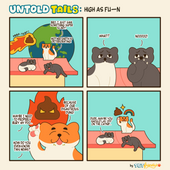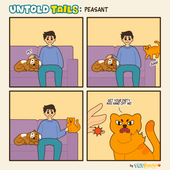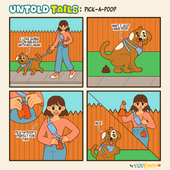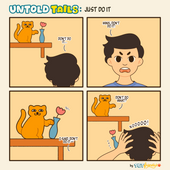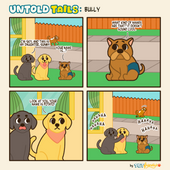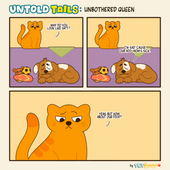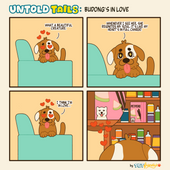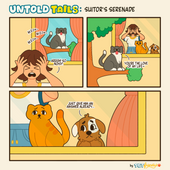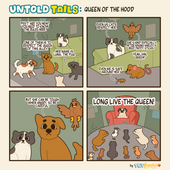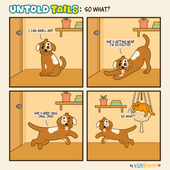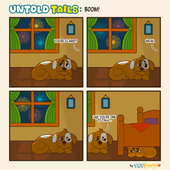One night, as you slept in the bed with your pet, you were suddenly awakened by its twitching and kicking. What might possibly be happening? Perhaps, dreaming?
Dreams occur in humans while we sleep. Our mind creates vivid mental images that reflect a series of thoughts, emotions, and sensations. Dreams involuntarily take place during a specific stage of the sleep cycle known as Rapid Eye Movement (REM) sleep. A REM sleep is a stage where most dreams happen, and it’s also when our eyes move rapidly behind our eyelids as we’re mentally visualizing something. Interestingly, during this stage of sleep, our brain activity mirrors what we experience when we are awake, contributing to the intense and often vivid nature of our dreams.
While many experts still do not fully understand why we dream, there are several theories that attempt to explain it. One of the notable theories suggests that dreaming plays a crucial role in helping us process memories and better understand our emotions. Dreaming helps us gain insights into our subconscious, offering a way for our minds to work through unresolved thoughts and feelings, while providing an outlet for us to express desires, fears, and experiences that might be difficult to confront while awake.
Dogs and cats spend about half their day sleeping as per the National Sleep Foundation’s report. With that in mind, you might be wondering if your pet dreams. According to the American Kennel Club, scientists believe that most vertebrates (species that have a backbone and skeleton) like dogs and cats are capable of dreaming on a regular basis. Some researchers, including those from the Massachusetts Institute of Technology, concluded that animals dream the same way humans do. Just like us, they go through a sleep cycle including the REM stage. During REM sleep, their brains have been found to be highly active, which indicates they may experience vivid dreams similar to our own. These dreams are thought to be complex and play a role in how our pets process memories, including remembering and replaying sequences of events from when they were awake.
According to Stanley Coren, a Psychology Professor Emeritus at the University of British Columbia, dogs usually twitch or move during sleep due to their underdeveloped pons, particularly in puppies and older dogs. Pons is part of the brainstem that connects to the spinal cord which controls sleep cycles and is in charge of preventing the body from moving while sleeping. This is the basic reason why dogs move during sleep; they have underdeveloped or less effective pons, leading to more noticeable movement during sleep. Moreover, a French neuroscientist and medical researcher, Dr. Michael Jouvet presumed that kittens are much more likely to dream than adult cats as the amount of REM sleep the cat experiences decreases as they get older.
You can often tell when your pet is in REM sleep and likely dreaming when you observe the following:
> Their eyes are closed and moving quickly beneath their eyelids
> Their breathing is rapid (if they were simply in deep sleep and not dreaming, their breathing would be slow and shallow)
> Their body twitches or they paddle their paws as if running
> Their head may move, sometimes as if reacting to something in their dream
> They might whine, growl, or make other vocalizations during sleep
There are no extensive studies on the specific dreams that dogs or cats experience, some research only indicates that their dreams are most likely about their owners or what they experienced when they were awake. Since pets and humans have remarkably similar sleep cycles, they have similar dream patterns too. This suggests that our pets probably experience nightmares as well. Given that their dreams often revolve around their daily lives, their nightmares might reflect something they’ve encountered, such as a scary cat or their fear of taking a bath. These familiar experiences could manifest in their dreams, often happy dreams but may also be frightening ones.
So as pet owners what should we do in times of this? Though it can be tempting to wake them up and comfort them when they seem to be having a bad dream, it’s not always a good idea due to the high chance that your pet might bite or react unpredictably when woken abruptly. While it’s understandable to feel concerned seeing your fur babies in distress, it’s crucial to recognize that when they are sleeping, they are likely to have dreams and are not actually in real danger. Rather than waking them up, it’s best to let them have their deep REM sleep and wake up naturally. Think this: If you were in a deep sleep, dreaming of something, would you want to be woken up?
Instead, try to provide a peaceful sleeping space and a comfortable environment for them. A cozy sleep space offered by the Mewoo Bunny Buddy Bed or Checkered Pet Cushion, can help provide a sense of security and comfort. This way they dream a good dream knowing they are safe and secure in their cozy little space.
If you are really concerned and feel compelled to intervene, you may try calling their name softly to avoid startling them. However, it’s important to note that this will most likely disturb them and could leave them feeling grumpy or disoriented. Just like for humans, having good sleep is an essential part of our overall well-being, for recovery and to feel well rested. So it’s best to allow them to sleep undisturbed whenever possible to ensure they get the full benefits of sleeping soundly. Tuck your pets to bed and wish them sweet dreams for us!
REFERENCES:
What Do Dogs Dream About? – American Kennel Club
Do Dogs Dream? What Do Dogs Dream About? | PetMD
Do Cats Dream? Why Your Kitty Moves and Makes Sounds While Sleeping



